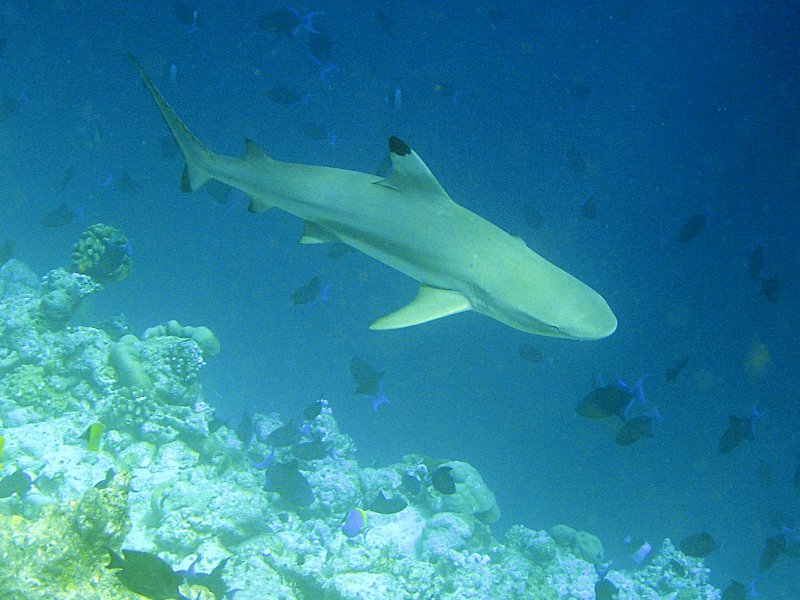
Interactions
As you can imagine, just like other sharks, the blacktip reef shark is known as a predator to other organisms in its environment. The habitat this species lives in is primarily in shallow waters, which does not leave for much space for other predators. Living in shallow waters, however, provides plenty of options for the shark to prey on and form commenalistic relationships between.
In the shallow waters of the coral reefs there are numerous species
of small aquatic organisms. There are many small bony fish and
crustaceans in the area for the shark to feed on which is also known
as predation. (Papastamatiou et al. 2009). There are other species
such as the remora, that the shark forms a commensalistic
relationship with. These are little sucker fish that attach to
the shark, and feed from it (Mourier et al. 2012). The food they get it
from the excess food that the shark leaves behind. They simply
attach between the two fins of the shark and tag along for the ride
(Mourier et al 2012).
Then when it comes time, they feed. The relationship is seen as
commensalism because the remora
 benefits from this relationship, while the shark is unaffected.
benefits from this relationship, while the shark is unaffected.
The shark’s interaction with humans is slightly different than its interactions with other sharks. The black finned reef sharks are more skittish to human interaction (Papastamatiou et al. 2009). Humans hunt these sharks for meat. They are not a protected species, but if the hunting continues at this rate they will need to become protected in order to survive. This currently ranks them as being noted as a nearly protected species (IUCN 2009). The sharks only reproduce biannually, so if they continue to be hunted by humans, the reproduction cycle will not be able to keep up with the number of sharks dying.
<<Reproduction Home Facts>>